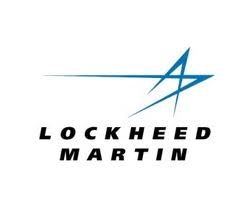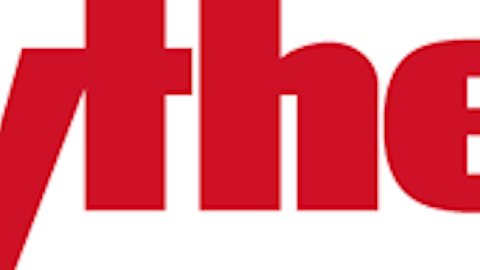As an investor, it pays to follow the cash. If you figure out how a company moves its money, you might eventually find some of that cash flowing into your pockets.

Today, let’s look at Lockheed Martin Corporation (NYSE:LMT) and three of its peers.
The cash king margin
Looking at a company’s cash flow statement can help you determine whether its free cash flow backs up its reported profit. Companies that can create 10% or more free cash flow from their revenue can be powerful compounding machines for your portfolio. A sustained high cash king margin can be a good predictor of long-term stock returns.
To find the cash king margin, divide the free cash flow from the cash flow statement by sales:
Cash king margin = Free cash flow / sales
Let’s take McDonald’s Corporation (NYSE:MCD) as an example. In the four quarters ending in December, the restaurateur generated $6.97 billion in operating cash flow. It invested about $3.05 billion in property, plant, and equipment. To calculate free cash flow, subtract McDonald’s investment from its operating cash flow. That leaves us with $3.92 billion in free cash flow, which the company can save for future expenditures or distribute to shareholders.
Taking McDonald’s sales of $25.5 billion over the same period, we can figure that the company has a cash king margin of about 14% — a nice high number. In other words, for every dollar of sales, McDonald’s produces $0.14 in free cash.
Ideally, we’d like to see the cash king margin top 10%. The best blue chips can notch numbers greater than 20%, making them true cash dynamos. But some businesses, including many types of retailing, just can’t sustain such margins.
We’re also looking for companies that can consistently increase their margins over time, which indicates that their competitive position is improving. Erratic swings in margins could signal a deteriorating business or perhaps some financial skullduggery. You’ll have to dig deeper to discover the reason.
Four companies
Here are the cash king margins for four industry peers over a few periods.
| Company | Cash King Margin (TTM) | 1 Year Ago | 3 Years Ago | 5 Years Ago |
|---|---|---|---|---|
| Lockheed Martin Corporation (NYSE:LMT) | 1.3% | 7% | 6% | 7.9% |
| Raytheon Company (NYSE:RTN) | 6.6% | 7.1% | 9.8% | 4.2% |
| General Dynamics Corporation (NYSE:GD) | 7.1% | 8.4% | 7.7% | 9% |
| Northrop Grumman Corporation (NYSE:NOC) | 9.2% | 6.1% | 6% | 7.3% |
Source: Capital IQ, a division of Standard & Poor’s.
None of these companies meets our 10% threshold for attractiveness, but Northrop Grumman comes close, and has shown steady growth over the past three years. General Dynamics has the second-highest cash king margins, but its current margins are lower than they were five years ago. Raytheon’s margins are just behind General Dynamics’, and Raytheon has managed to grow its margins by nearly 2.5 percentage points from five years ago. However, it has seen reductions of more than three percentage points from three years ago. Lockheed Martin Corporation (NYSE:LMT) has the lowest cash king margins at 1.3%. Also, its current margins are the lowest they have been over the past five years. However, Lockheed offers a hefty 5% dividend yield while Raytheon’s yield is 3.5%, Northrop Grumman’s is 3.3%, and General Dynamics’ is 2.9%.
Cost-cutting at the Pentagon, along with other buyers, has caused all of these businesses to suffer from declines in their sales—and threats of further defense spending cuts have shareholders spooked. However, investors should keep in mind that, in defense, “spending cuts” is usually code for slowing growth in spending rather than lowering existing spending. However, these conditions still have Lockheed Martin Corporation (NYSE:LMT) scrambling to minimize costs to avoid significant reductions in its profit margins. Also, if the cuts do happen, heavy exposure to capital-intensive products, including tanks and warships, could put General Dynamics in a tough spot. Raytheon, on the other hand, has managed to maintain some of the highest profit margins in the industry, and has analysts predicting an annual growth rate of approximately 6% per year. Northrop Grumman is expected to see reductions in its sales volume over the next few years, too.
The cash king margin can help you find highly profitable businesses, but it should only be the start of your search. The ratio does have its limits, especially for fast-growing small businesses. Many such companies reinvest all of their cash flow into growing the business, leaving them little or no free cash, but that doesn’t necessarily make them poor investments. Conversely, the formula works better for slower-growing blue chips. You’ll need to look closer to determine exactly how a company is using its cash.
Still, if you can cut through the earnings headlines to follow the cash instead, you might be on the path toward seriously great investments.
The article Is Lockheed Martin a Cash King? originally appeared on Fool.com.
Jim Royal has no position in any stocks mentioned. The Motley Fool recommends McDonald’s. It owns shares of General Dynamics, Lockheed Martin, McDonald’s, Northrop Grumman, and Raytheon.
Copyright © 1995 – 2013 The Motley Fool, LLC. All rights reserved. The Motley Fool has a disclosure policy.



